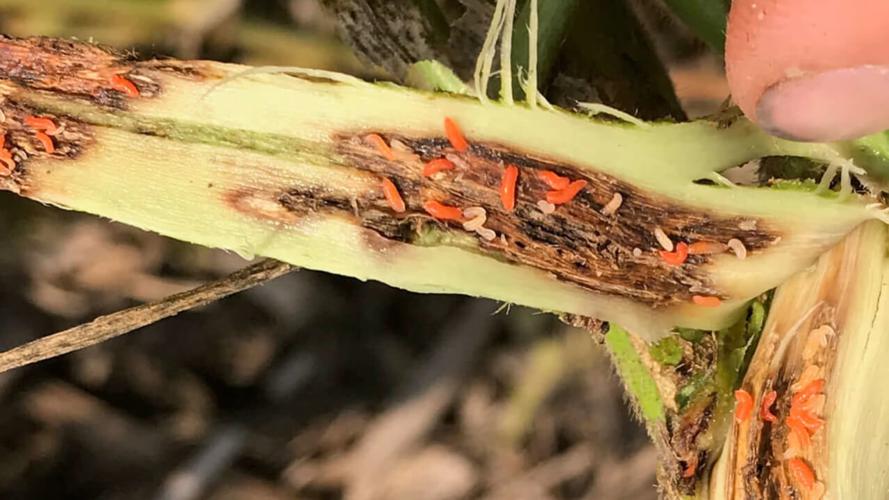Soybean gall midge spreading in Midwest

COLUMBIA, Mo. — Soybean gall midge is appearing about 10 days earlier than usual in Nebraska crops, says University of Nebraska-Lincoln Extension crop protection and cropping systems specialist Justin McMechan. That could spell trouble for Missouri soybean growers as well.
First found in 2019 in Missouri, it is in the state’s far northwestern counties of Atchison and Holt, says University of Missouri Extension state entomologist Ivair Valmorbida. Researchers have confirmed soybean gall midge in 164 counties in seven states, including eight new counties in 2023.
Yield losses range from 17% to 31%, and plant death can occur at 21 days in high-pressure areas. Soybean gall midge appears most often in early-planted soybean, McMechan says.
McMechan is part of Soybean Gall Midge Alert Network (https://soybeangallmidge.org).
Begin scouting after soybean plants reach the V2 growth stage by looking for dark discoloration at the base of the stem, says Valmorbida. Peel back blackened tissue in discolored areas near the base of the soybean stem to look for white or orange larvae. Heavily infested plants will wilt and die, he says.
Females lay eggs at the base of soybean plants. After hatching, larvae enter stems. Early instars are tiny – less than an 1/8 inch – and are translucent or white in color, resembling maggots. Late instars appear bright orange.
Third instars exit stems and overwinter in the soil as mature larvae or pre-pupae that pupate in late spring. Adults emerge over several weeks, beginning in early to mid-June, with infestations reported in late June in the past.
Adults are minute, ¼ inch long and slender-bodied. They are recognizable by black-and-white striping on the legs, orange abdomens and mottled wings; however, it is rare to see adults in soybean fields, says Valmorbida.
Plant injury is greatest at field edges near dense vegetation and waterways, in fields directly adjacent to fields planted in soybean the previous year. Larvae have also been found on alfalfa and sweet clover and may infect other legume crops.
It is important to scout after a hailstorm since hailstones create wounds on the stems, making openings for disease and pests to enter.
Late planting, after June, seems to be the best deterrent to soybean gall midge, says McMechan. He also urges crop rotation for prevention of soybean gall midge and other diseases.
University of Nebraska-Lincoln researchers studying soybean gall midge have found little scientific data supporting the effectiveness of seed treatment or foliar fungicides. They have had some success in reducing populations by hilling (or mounding of soil) around the plants.
At present, McMechan and Valmorbida recommend these strategies:
- Plant soybean late.
- Plant high-risk fields last.
- Rotate, rotate, rotate.
- Consult your local extension agronomist if you suspect soybean midge gall in your crops.
Keep abreast of research as it develops. Sign up for free soybean gall alerts at https://soybeangallmidge.org/sign-up-for-network-updates. Join MU Extension’s free Integrated Pest Management Pest Monitoring Network at https://ipm.missouri.edu/pestMonitoring/.
Learn more at https://soybeangallmidge.org/soybean-gall-midge-series-videos.
Miss Clipping Out Stories to Save for Later?
Click the Purchase Story button below to order a print of this story. We will print it for you on matte photo paper to keep forever.

